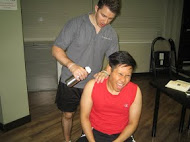Fireworks injuries include minor burns, wounds, injured fingers, and eye injuries. The use of fireworks is especially common during New Year’s Eve and Independence Day, however, they have always been used in many other celebrations, but its safety is not always guaranteed to the users and its audience. Thus, it is generally recommended to learn how to properly administer first aid to different kinds of fireworks injuries. To learn how to treat and manage fireworks injuries, enroll in First Aid Courses.
First Aid Treatment for Various Fireworks Injuries
The common fireworks injuries include minor burns on hands or legs, wounds that are one-inch big or less, big wounds, injured fingers and eye injuries.
Minor burns on hands or legs (first degree burns)
- Rinse the burn on cool water for 10 to 15 minutes. Do not use ice for burns. Also, placing butter, toothpaste or a slice of tomato is also not recommended.
- Place medicated ointment to the burned area.
- Cover the burned area with aluminum foil or plastic wrap.
- Bring the patient to the emergency department of the hospital.
- Tetanus shots may be needed.

Small wounds (approximately one-inch big or less) and big wounds
- Run the wound on cool water for 10 to 15 minutes.
- For big wounds, use alkaline soap to clean the wound.
- Cover the burned area with aluminum foil or plastic wrap.
- For small wounds, bring the patient to the nearest hospital emergency department if necessary. For big wounds, bring the patient to the nearest hospital emergency department immediately.
Injured fingers
- Run the fingers on cool water if the fingers are still intact. Do not apply ice to the skin.
- If the fingers are amputated, attempt to look for the amputated digits and wrap in a cloth before placing in a clean plastic bag with ice. If the digits are dirty, clean in cool water.
- Bring the patient to the emergency department of the hospital.
Eye injuries
- To remove any residue from the fireworks, flush the eye with cool water. Do not use ice.
- Do not touch or scratch the affected eye.
- Using a clean cloth, cover the affected eye.
- Bring the patient to the emergency department of the hospital.
How to Prevent Fireworks Injuries
Although fireworks injuries are almost always preventable, many people do not know how the safety tips that must be known to all handlers and onlookers of fireworks. The following are the common safety tips to prevent fireworks injuries:
- Make sure to buy legal fireworks that meet the country’s safety and quality standards, however the use of legal fireworks do not safeguard the safety of its users.
- Light one firework at a time and do not attempt to relight a dud.
- Do not allow kids to play with fireworks.
- Do not attempt to make own fireworks
- Only use fireworks outdoors and have a bucket of water and hose prepared in case accidents occur.
- Never point or throw fireworks at someone or something, even in jest. Fireworks are known to shoot off in the wrong direction.
- While lighting fireworks, do not hold them in the hand or any part of the body. Wear eye protection.
Fireworks injuries commonly include minor burns, wounds, and injuries to the fingers and eyes. It is important to always take the necessary precaution to avoid fireworks injuries.
Online Sources:
http://www.abs-cbnnews.com/lifestyle/12/27/12/first-aid-tips-fireworks-injuries
http://kidshealth.org/parent/firstaid_safe/outdoor/fireworks.html